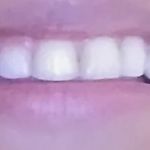How to Deal with a Tooth Abscess at Home: Practical Solutions and Remedies
- 1. Understanding a Tooth Abscess
- 2. Effective Home Remedies for a Tooth Abscess
- 3. When to Seek Professional Help
- 4. Preventing Future Tooth Abscesses
1. Understanding a Tooth Abscess
A tooth abscess is a painful infection that typically occurs at the root of a tooth or in the gums. The infection is usually caused by bacteria entering through a crack or cavity in the tooth. An abscessed tooth can lead to serious complications if left untreated, so it's essential to know how to manage the condition at home, especially during the early stages.
Common symptoms of a tooth abscess include severe toothache, sensitivity to hot or cold, swelling in the gums or face, and bad breath. The pain can become intense, so it's crucial to take steps to address the issue as soon as possible.
2. Effective Home Remedies for a Tooth Abscess
When dealing with a tooth abscess at home, it’s important to focus on reducing pain, fighting the infection, and promoting healing. While these remedies can help alleviate symptoms, they are not substitutes for professional dental care if the abscess worsens.
Salt Water Rinse
One of the simplest and most effective home remedies is a salt water rinse. Salt water helps reduce inflammation, draw out infection, and provide temporary pain relief. To make a salt water rinse, mix one teaspoon of salt in a glass of warm water and swish it around your mouth for 30 seconds before spitting it out. Repeat this process several times a day.
Cold Compress
If you're experiencing swelling or pain, a cold compress can help reduce inflammation and numb the area. Wrap ice in a cloth and apply it to the affected area for 15 minutes at a time, several times a day. Avoid placing the ice directly on the skin to prevent frostbite.
Essential Oils
Certain essential oils, like clove oil, have natural antibacterial properties that can help fight infection. Clove oil can also provide temporary pain relief. Dilute a few drops of clove oil with a carrier oil like coconut oil and apply it to the abscessed area using a cotton ball. Be cautious not to swallow the oil or let it touch your gums in large amounts, as it can cause irritation.
Warm Tea Bags
Warm tea bags, especially those containing black tea, can reduce swelling and provide pain relief due to their tannin content. Place a warm, damp tea bag on the affected area for a few minutes, repeating as needed. This remedy may also have soothing effects on gum inflammation.
3. When to Seek Professional Help
While home remedies can provide temporary relief, there are situations where you should seek professional dental care. If the abscess is not improving, the pain becomes unbearable, or you notice a fever, it is important to visit a dentist as soon as possible.
If left untreated, a tooth abscess can spread the infection to other parts of your body, leading to severe health complications. Your dentist may need to drain the abscess, prescribe antibiotics, or in some cases, perform a root canal or tooth extraction to eliminate the infection.
4. Preventing Future Tooth Abscesses
Once you've dealt with a tooth abscess, it’s important to take steps to prevent future occurrences. The best way to prevent tooth abscesses is to maintain good oral hygiene. This includes brushing your teeth at least twice a day with fluoride toothpaste, flossing daily, and using mouthwash to rinse away bacteria.
Additionally, regular dental check-ups can help catch any dental issues before they become serious. If you have a history of cavities or gum disease, ask your dentist for personalized advice on how to protect your teeth and gums from infection.
Also, avoid habits like chewing on hard objects or using your teeth to open bottles, as these can lead to cracks in your teeth that provide a pathway for bacteria to enter and cause abscesses.







 Dr. May P. Chu, DDS5.0 (161 review)
Dr. May P. Chu, DDS5.0 (161 review) Superior Smiles3.0 (23 review)
Superior Smiles3.0 (23 review) Dr. Steven Pittman5.0 (1 review)
Dr. Steven Pittman5.0 (1 review) North Powers Modern Dentistry4.0 (541 review)
North Powers Modern Dentistry4.0 (541 review) Endodontic Associates of Bergen County: Feintuch Michael DDS4.0 (80 review)
Endodontic Associates of Bergen County: Feintuch Michael DDS4.0 (80 review) Dental Care of North Fort Myers4.0 (708 review)
Dental Care of North Fort Myers4.0 (708 review) The Importance of Oral Health Education During Pregnancy for a Healthy Pregnancy
The Importance of Oral Health Education During Pregnancy for a Healthy Pregnancy Best Tips for Brushing Your Teeth Properly for Healthy Gums: Essential Techniques for Oral Health
Best Tips for Brushing Your Teeth Properly for Healthy Gums: Essential Techniques for Oral Health Why Skipping Dental Checkups Can Lead to Bigger Oral Health Problems
Why Skipping Dental Checkups Can Lead to Bigger Oral Health Problems Advantages of Porcelain Dental Restorations
Advantages of Porcelain Dental Restorations How Can Diabetes Cause Tooth and Gum Problems? Preventing and Managing Oral Health Issues
How Can Diabetes Cause Tooth and Gum Problems? Preventing and Managing Oral Health Issues Healthy Habits for Promoting Good Oral Health and Hygiene: Tips for a Healthy Smile
Healthy Habits for Promoting Good Oral Health and Hygiene: Tips for a Healthy Smile